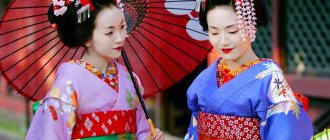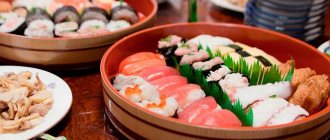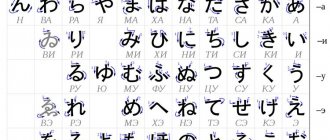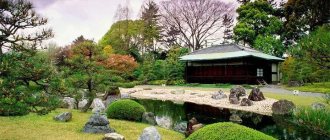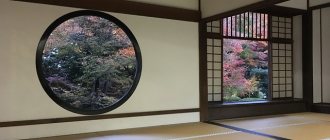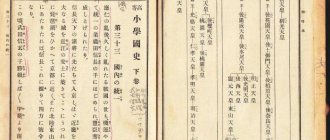Japan may seem like a strange place. No other country in the world has experienced such a fusion of tradition, technology and circumstance. Today in Japan, the feudal traditions of the samurai are strangely combined with advanced computer technology. It is also the only country where people who survived the atomic bombing are still alive.
Although Japan is one of the largest economies on the planet, it is extremely isolated and its culture is often misunderstood by everyone else on the planet. Here are examples of some of the strangest aspects of Japanese culture.
Hihikomori
Although the world's population is growing exponentially, the Japanese are slowly dying out as the nation continually ages. And this problem is only exacerbated by the growing popularity of hikikomori.
Gihikomori is an obsessive desire to be alone.
Of course, in every society there are a small number of people who can be called “recluses.” Most of these hermits tend to be elderly, with mental illnesses such as depression and agoraphobia. But Japanese hikikomori hermits are young. These are mostly dissatisfied teenagers and twenty-year-olds who almost completely refuse to contact society.
There are no precise explanations to explain the rise in hikikomori. Among the possible reasons, doctors highlight the growing popularity of the Internet, intense pressure on the psyche during study, and pressure from parents who want to “settle” their children well in adulthood. Psychiatrists have only recently begun to help such people, whom some call the “missing million.”
Horse meat sashimi
The Japanese love for raw foods is known to everyone. Sashimi from different types of fish in restaurants will not surprise anyone. But few people know that the Japanese also eat raw horse meat and consider it a great delicacy. There are practically no parasites in raw horse meat, it is very nutritious and juicy (according to the Japanese, of course). Also, residents of this country believe that raw horse meat can prolong life. Given that the average life expectancy there is incredibly high, one suspects that they are right.
Tags:
food world travel facts japan
Crimes
Although legends of the Yakuza are quite widespread, crime rates in Japan are unusually low. Owning firearms is prohibited here, and even ordinary swords must be registered with the police. Among all the countries in the world, the murder rate is lower than in Japan only in tiny Monaco.
They don't stand on ceremony when it comes to criminals in Japan.
There is another interesting nuance in the Land of the Rising Sun - if a person finds himself in court, he can be almost sure that he will go to prison. In fact, the conviction rate is over ninety-nine percent because a judge's career can be severely damaged if he acquits the accused. Moreover, no one has abolished the death penalty in Japan. On average, two to three prisoners are executed each year.
Unlike most other countries, prisoners sentenced to death are given only a few hours notice before their execution. The family is not informed at all until the sentence is carried out. Although Japan has a rich history of gruesome and unconventional execution methods, today prisoners are typically hanged.
Gestures
The Japanese love to use various symbolic gestures in their daily lives. For example, when taking pictures, the Japanese like to show a “V” with their fingers. They fold their hands in front of their chests and express their regret.
If a person touched his nose, then at the moment of speaking he meant himself. A gesture that in the West means “OK” here speaks of money.
If a man meets a lady in the evening, he can show his little finger. But in relation to girls, this gesture is considered vulgar.
Nutrition
The Japanese have a penchant for trying new foods and drinks, and the tastes and aromas that locals enjoy often seem disgusting to Westerners. Interestingly, the Kit Kat candy bar is extremely popular in Japan, as its name is remarkably similar to the phrase "kitto katsu" (literally: you are sure to win), which is used as a wish for good luck.
Chocolate in Japanese.
Students are often given these bars "for good luck" before an exam. Unlike the rest of the world, which only has milk chocolate Kit Kats, Japan has dozens of exotic flavor variations, such as roasted corn, miso, Camembert cheese, baked potato and soy sauce.
Rules of conduct and etiquette
First of all, let's talk about etiquette customs, since the Japanese are very respectful of etiquette rules.
The Japanese value hospitality. And here you need to know certain things so as not to offend a person. For example, handshakes are not accepted here, and bowing is considered the highest measure of respect for a person.
It can be used to express:
- greetings,
- parting,
- humility,
- apology,
- respect.
Residents bow when they meet, even if they have already met the person several times a day. You may notice that even while riding a bicycle, Japanese people often bow to each other.
Interestingly, the level of respect shown depends on the depth of the bow. They bow easily and not low to a stranger or unfamiliar person. This is a quick bow. This is how you greet a store clerk, a waiter, or a neighbor with whom you are not on friendly terms. Bows below are used for bosses. They bow very low when greeting the presidents of the company, and in personal relationships, people who are very respected by the Japanese: old people, people higher in rank and status.
The foreigner must also bow back to the Japanese. At the same time, looking directly into the eyes is considered offensive; you should look down.
Today, young people bow less often, replacing farewells with the word “bye.” This way, they can better emotionally express feelings of love for friends or sadness over a breakup.
Labor productivity
Although the Japanese are known for their hard work, the stereotype of a drunken businessman sipping margaritas at a karaoke bar isn't too far from the truth. Alco-marathons are often seen as the cornerstone of the Japanese business model; corporate relationships are forged over gallons of sake, and young employees struggle in vain to keep up with their seasoned bosses.
The Japanese sleep in any convenient place.
However, hangovers at work can be overcome relatively easily here. Japanese business culture allows employees to take a nap at work. “Inemuri” is a fast sleep designed to “recharge” at work. This is seen as a sign that a person works hard “to the last.”
Many Japanese people wash their families in the same bathtub.
The tradition of the whole family washing in one bath without changing the water did not arise from the fact that the Japanese want to save water. The origins of this custom go back to ancient times and are associated with the unification of the spirit of family members. For the Japanese, a bath is a place of relaxation and meditation, where you can relax and free your mind from everyday thoughts. Families often wash in order: first the father, then the mother, and then the children.
In fact, family members enter the bath already clean, because... They wash themselves beforehand either in the shower or in a basin next to the bathtub. The very procedure of relaxation in water involves connecting the energy of family members in order to unite more closely. The Japanese pay close attention to their hygiene, so the water in the bath remains clean.
Kokodusi
Nothing seems more tragic than dying alone, but it happens all the time in Japan. One of the sad side effects of the aging of the nation (one in five Japanese is over sixty-five years old, and many are even 80 or 90 years old) is that people tend to die at home, and alone. Sometimes no one finds out about their death for months or even years. This phenomenon is known as kodokushi, lonely death.
Lonely old people.
Thousands of similar cases occur in Japan every year, especially among men who have few social connections. Sometimes bodies remain undiscovered for so long that they become mummified. There are even companies that specialize in cleaning the apartments of people who died alone, because they leave behind “kodokushi stains” - traces of rotting bodies. It is estimated that in twenty years one in three Japanese will be elderly, which does not bode well for stopping lonely deaths.
Kabuki
One of the distinctive Japanese theatrical forms is Noh. Actors performing historical scenes move slowly across the stage in heavy, rich robes. They wear masks that realistically convey the character's character to the audience. While Noh was popular with the ruling class, an entirely different form of performing arts began to gain popularity.
During the hot, dry summer of 1603, the ritual dancing of a young girl named Izumo No Okuni at a dry estuary in Kyoto attracted many spectators and passers-by. Okuni became the founder of Kabuki, the “art of singing and dancing,” which is still popular today. She didn't wear a mask, and people could watch her rich facial expressions.
Dancing without masks had its own nuances. Initially, Kabuki was performed exclusively by women. Performers were in demand among men, so the shogunate in 1629 banned women from performing on stage. They were replaced by young men who, as it turned out, also did not have high morality. Ultimately, only middle-aged men were allowed to perform in Kabuki.
Porn
Japan has always been a taboo society, and local prudishness even extends to pornography. Although filming even hardcore sex acts is allowed, the genitals of the participants must be blurred to adhere to moral standards. This led to a trend among Japanese porn producers called "bukkake" - showing violent ejaculation as proof that the actors actually had sex.
Lots of porn and no sex life.
Interestingly, a large number of Japanese boys reported that they had little to no interest in sexual relations. It is not surprising that in Japan the concept of “soshoku danshi”, or “herbivorous men” arose.
Ikebana
Ikebana is an art form that attracts the Japanese with its impermanence. After all, no matter how beautiful the result of your efforts, the flowers will wither and die. Ikebana—"living flowers"—is a way of making plants look their best while they are still alive. The Japanese art of bouquet arranging was originally associated with religion. The first flower arrangements were created as offerings to the gods. A breakthrough in art occurred with the emergence of the tatebana style—an entire flower arrangement was created around one branch in the center of a vase.
Today, the Japanese art of plant arrangement is widespread throughout the world. Those who appreciate the exquisite simplicity of flowers can immortalize them in ikebana.
Pachinko
Pachinko is sort of a cross between pinball and a slot machine. This is a vertical machine that players control with balls falling from above through a series of pins. If the balls land in the right place, a new batch of balls appears. Even though gambling is technically illegal in Japan, the winner is given a token that they can exchange elsewhere for cash.
Pachinko.
Japan is currently trying to legalize pachinko as the country's potential gambling revenue is estimated at $10 billion, almost double that of Las Vegas.
The Japanese are still perverts
Despite their stiffness, modest behavior and boundless respect for others, the Japanese are very liberated in the sex industry. In fact, Japan is the birthplace of many perversions and inventions in the BDSM genre and is not at all shy about it. On the shelves of almost all kiosks in Japan you will find hentai, manga with porn overtones, and this is considered the norm there.
However, if a European decides to come to this country to indulge in his strangest fantasies, he may be disappointed. The Japanese are wary of strangers and rarely allow them into closed sex clubs
Yaeba
Double teeth are cool.
Anyone who has had to wear braces understands the importance of straight teeth. In Japan, however, there is a trend among young women called "yaeba" (literally "double teeth"). This beauty looks like teeth overlapping each other, and it is made in dental offices by attaching artificial teeth to the fangs. All this is quite expensive.
Suicides
Although homicides are virtually non-existent in Japan, the country has one of the highest suicide rates in the world. In some cases it is more than double that of other developed countries. Although attitudes are changing, suicide has long been viewed in Japanese culture as a noble act - a way to protect honor and protect the family's reputation.
Suicide is the scourge of Japan.
One of the most striking suicide trends was that people began to throw themselves in front of (mostly commuter) trains. This has become such a problem that railroad companies routinely assign coverage to the family members of the suicide victim. Japan also has the Aokigahara Forest, located near Mount Fuji. It is known as a favorite place for suicides.
Bonseki
Bonseki, literally “tray of stones,” are miniature images of the landscape made on a dark tray using only small stones and white sand.
The art of Bonseki is believed to have developed in the 7th century under Emperor Tenmu, who created pictures of the world around him on a tray of sand. Bonseki may have been an ancient way of planning the layout of gardens. Bonseki is a temporary miniature, sand and gravel design that can be easily modified, and that is the charm of this art. Sitting over the tray and moving the sand is primarily a contemplative act. One school of Bonseki says, "The importance of Bonseki is the feeling of peace and satisfaction in creating scenes, not in the end result."
KFC
The typical Japanese diet is quite healthy. Eating foods like rice, tofu, and fresh vegetables every day has resulted in the Japanese becoming some of the longest-living people on Earth. But many Japanese today have a soft spot for familiar American cuisine, especially fried chicken.
Not exactly healthy food.
Major cities are full of KFC restaurants. Although only a small portion of the Japanese are Christians, they have adopted KFC as a Christmas tradition. On December 24, there is a kilometer-long line outside every KFC in Japan. Many even make reservations a month or two before Christmas.
Subscribe to our Facebook page
Politeness
It is indecent to talk on the phone or talk too loudly in transport. A strong aroma of women's perfume, eating in a subway car or other public transport is considered disrespectful to others.
If a Japanese man who is older than you gives you a gift, you should definitely show your respect by touching his hands.
When speaking, it is impolite to look people in the eyes, cross your arms, or cross your legs. The correct thing to do is to look at the interlocutor's neck area.
Yawning, chewing gum and blowing your nose in public are considered the height of indecency here.
Before throwing away the napkin, you need to fold it carefully. In the country, the habit of order and cleanliness is instilled in people from childhood.
But it is not customary for the Japanese to give up their seat on public transport. This is due to the peculiarities of their mentality. The Japanese believe in karma, and when offering help, they do not want anyone to feel obligated to them.


